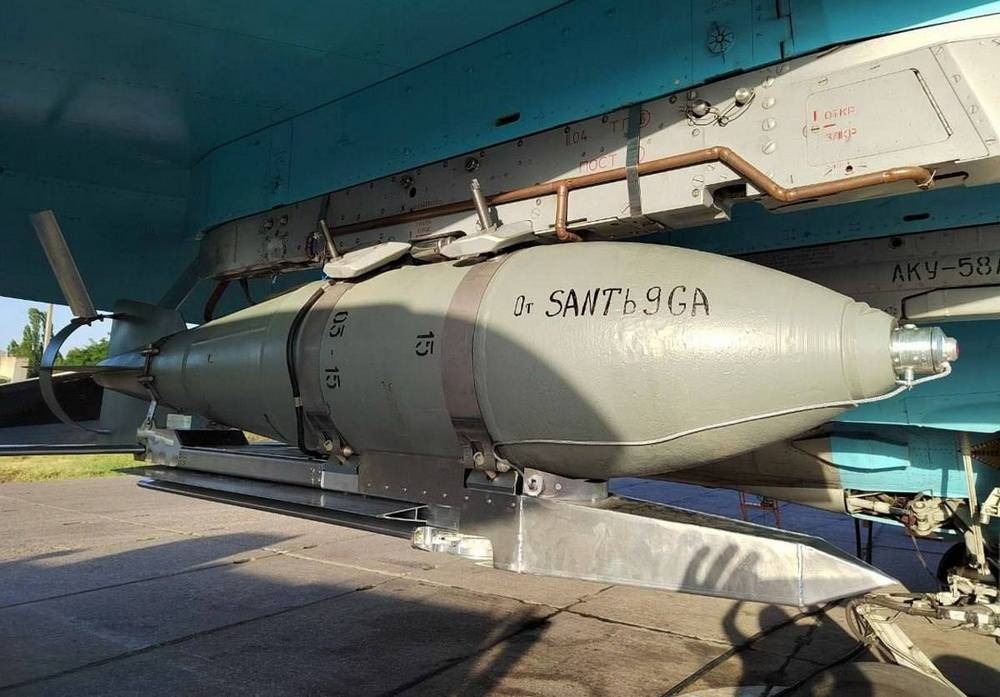Russian forces conducted strikes in Myrnohrad, Donetsk Oblast, using three universal interspecific glide munition (UMPB) D-30SN guided glide bombs, Dmytro Lykhovii, spokesperson for the Tavria Operational Strategic Grouping of Forces, confirmed during a national telethon. These bombs, initially assessed as S-300 missiles, are essentially upgraded versions of Soviet-era FAB unguided gravity bombs.
Russian forces had previously utilized unguided glide bombs as recently as January 2024. However, recent observations by ISW indicate that Russian milbloggers have claimed a shift in tactics, with Russian forces now employing FAB UMPB guided glide bombs instead of unguided versions.
A Russian milblogger described the UMPB guided glide bombs as having a noise-resistant GLONASS/GPS “Comet” signal receiver and folding wings similar to a Kh-101 cruise missile. These bombs reportedly can be launched from aircraft and ground-based multiple rocket launch systems (MLRS) like Tornado-S and Smerch MLRS.
Furthermore, a Russian outlet reported that Russian aviation is currently deploying UMPBs without jet engines, but there are plans to use UMPBs with jet engines in the future. This enhancement would allow Russian aviation to drop guided glide bombs from a lower altitude, similar to air-to-surface cruise missiles, and increase the maximum strike range to 80-90 kilometers.
ISW highlights claims by Russian milbloggers that the increased range of UMPB guided glide bombs will enable Russian Aerospace Forces (VKS) to deepen strikes on Ukrainian positions without the risk of Ukrainian air forces detecting or destroying Russian fixed-wing aircraft.
This is what can fix Ukraine’s Russian gliding bomb predicament
The Russian defense industrial base is likely attempting to mass-produce UMPB guided glide bombs, with Russian forces likely aiming to standardize production and increase their usage across the frontline, ISW concludes.
Earlier, the British research group Conflict Armament Research discovered significant enhancements compared to earlier models when analyzing fragments of a Russian guided bomb with a universal flight and correction module (UMPK) found in the Orikhiv area of Zaporizhzhia Oblast in October 2023.
The electronics in the analyzed bomb, manufactured in July 2023, were deliberately stripped of any markings that could reveal the origin of their components. This deliberate obfuscation by Russian manufacturers likely aims to protect their electronic suppliers from accusations of aiding Russia in circumventing sanctions.
Read also:
- Military: Russian troops used chemical munitions some 60 times in past week on Zaporizhzhia front
- Frontline report: Ukrainians conduct vicious surprise tank raid, wipe out Russian force accumulation near Kupiansk
- Zelenskyy: Ukraine building 2,000 kilometers of fortifications
- Russia producing three times more artillery shells than US and EU for Ukraine






